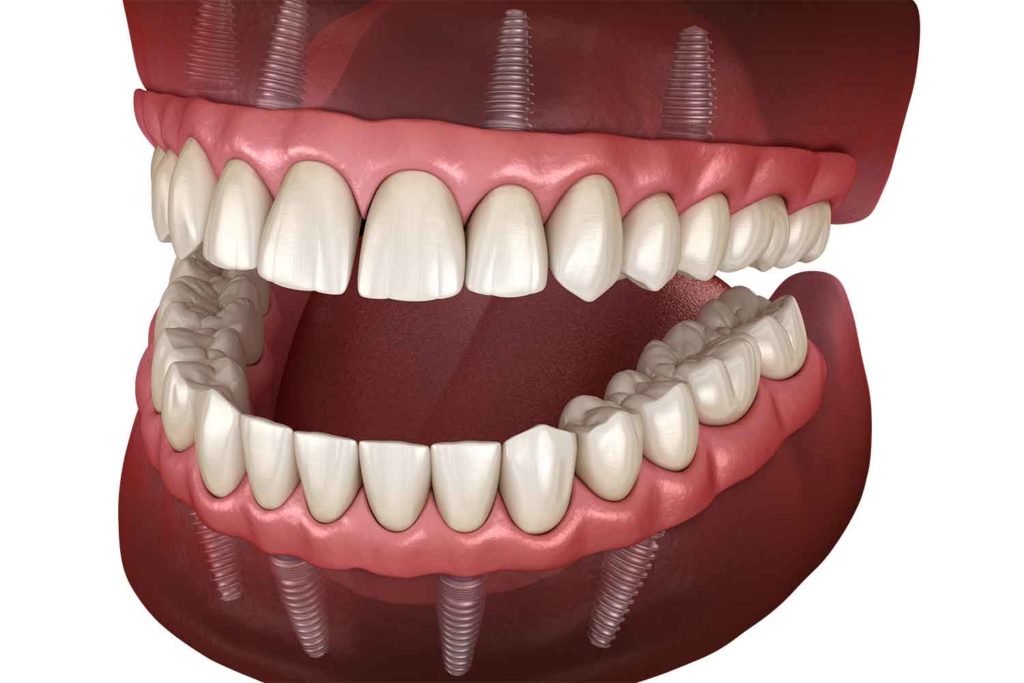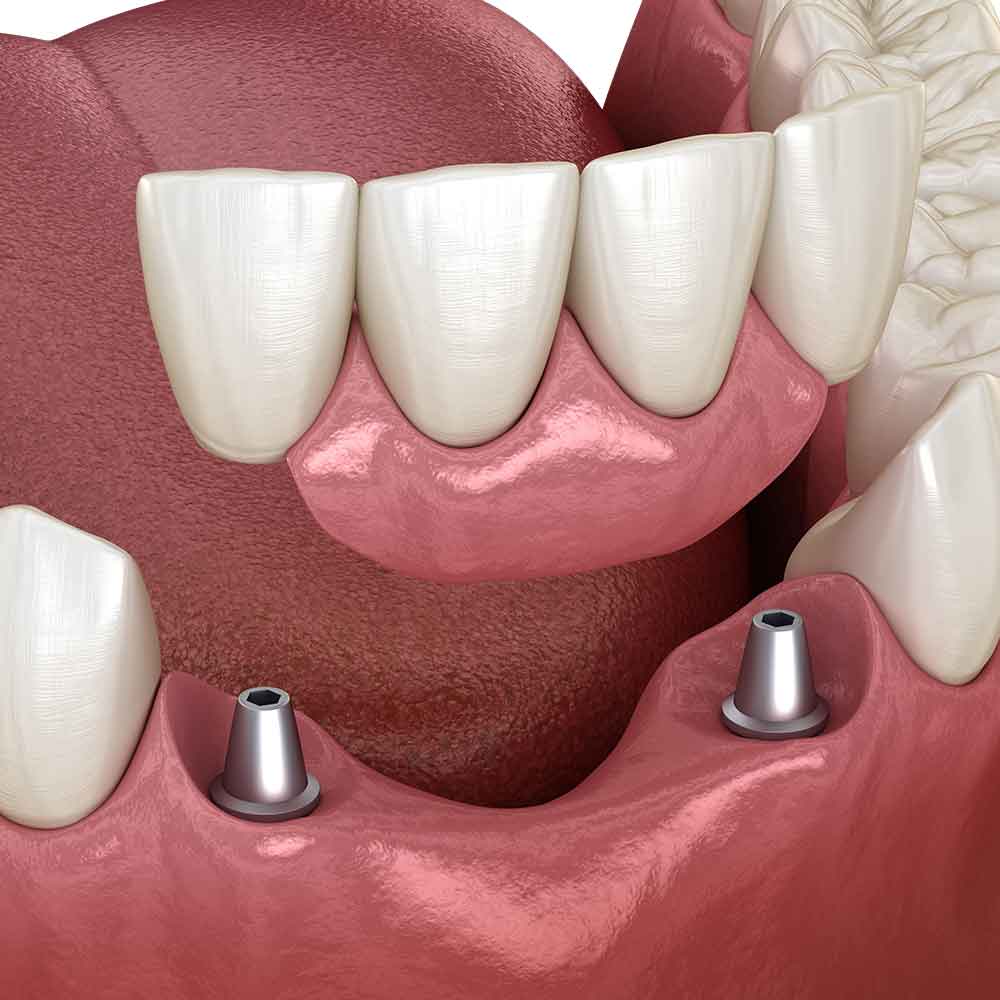Implant-supported dentures or bridges are a modern technique to replace missing teeth. Conventional dental implants are the most recommended tooth replacement option in dentistry today. However, patients missing several teeth may not be candidates for traditional single implants. For this reason, implant-supported dentures and bridges are a long-term replacement for missing teeth, combining the stability of implants with the functionality of prosthetics.
Generally, the implant-supported prosthodontic procedure is best for patients with substantial tooth loss or extensive decay. Unlike traditional dentures and bridges, implant-supported prostheses are permanently placed in the upper or lower jaw, offering a stable and durable solution. Additionally, these procedures often involve restorative dentistry techniques to improve oral health and ensure the longevity of the restoration.
In many cases, dental crowns are used as part of the restoration process, either on individual implants or as part of an implant-supported bridge. These crowns restore the appearance and function of natural teeth while maintaining proper bite alignment.
Today’s modern dentistry provides many options to replace missing teeth. Expert dentist Dr. Joe Burns can assist patients with implant-supported dentures, dental crowns, and other restorative dentistry treatments in Ridgeland, MS. By utilizing advanced techniques and personalized care, Dr. Burns ensures patients receive long-term, comfortable solutions for their dental needs.

Implant-supported dentures, also known as fixed-hybrid dentures, or screw-retained dentures, replace all teeth on a dental arch. Even more, they also provide an improved overall function for eating and speech. Unlike traditional dentures, implant-supported dentures are permanently placed in the upper or lower jaw.
The Implant-supported dentures technique replaces an entire arch of missing teeth using four, six, or eight implants. The implant-supported technique is conservative and cost-effective.
A minimum of two implants is placed vertically in the front of the jawbone. Coupled with, a minimum of two or four more implants at a specific angle toward the back of the jawbone. Placing the posts in a strategic manner maximizes your existing bone.
Sometimes, patients with bone loss may still qualify for implants using this technique. Best of all, the dental implants used are durable and long-lasting, making them an excellent option for eligible patients.
Implant-supported restorations improve your appearance by replacing missing or decayed teeth. While esthetics can improve self-esteem and confidence, implants have more advantages:
The added stability of a permanent restoration contributes to a better quality of life.

An implant-supported bridge is used to replace multiple missing teeth, for the purpose of restoring the esthetics and function of your mouth. A fixed dental bridge is a single restoration that uses dental implants next to the area of missing teeth for support.
Using dental implants to support your bridge provides a stable permanent solution to replace the missing teeth. Most important, the implants mimic the root structure. Sometimes, it is not possible to place multiple individual implants. In this case, an implant-supported bridge is a great solution. Typically, an implant-supported bridge requires multiple appointments to complete the process.
Adults who have suffered extensive tooth loss from oral health concerns, trauma, or other factors can benefit from implant-supported restorations. If you only need to replace a few teeth, an implant-supported bridge may be the best option. Your options will be discussed in detail during your consultation.
Quite possibly, some patients have suffered too much bone loss to be a good candidate without additional treatments. In many cases, bone grafting or sinus lifts can be performed to prepare the sites for implants. These preparatory procedures can add to your total treatment timeline.
Before your implant placement process begins, we will do our best to inform you about every aspect of the procedure. Implants and implant-supported restorations require sufficient healing time.
During a process called osseointegration, your jawbone will fuse to the implants, providing optimal stability. This process can take several months. Your doctor may recommend a soft-food diet for a period of time to ensure a successful recovery. Dr. Burns may collaborate with other local practitioners for some procedures.
Send us a message, and one of our patient coordinators will contact you soon.
Alternatively, you may call our Ridgeland office at (601) 956-5410.